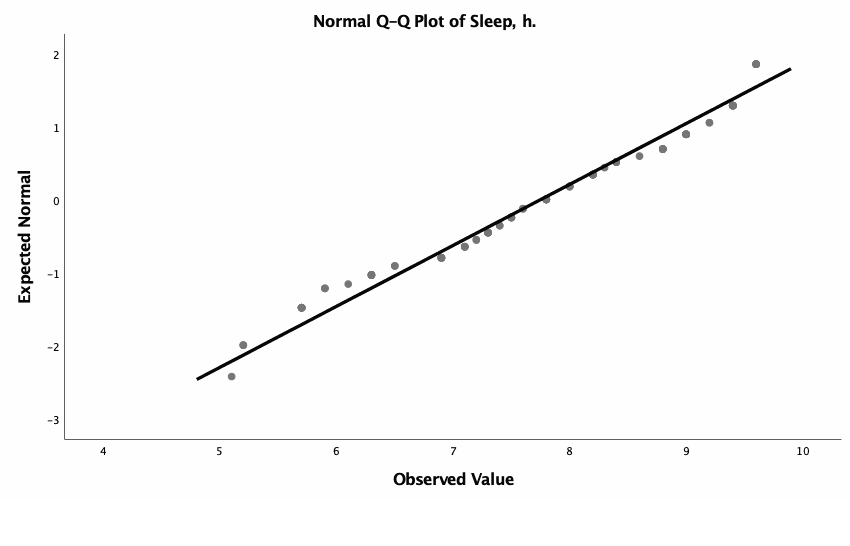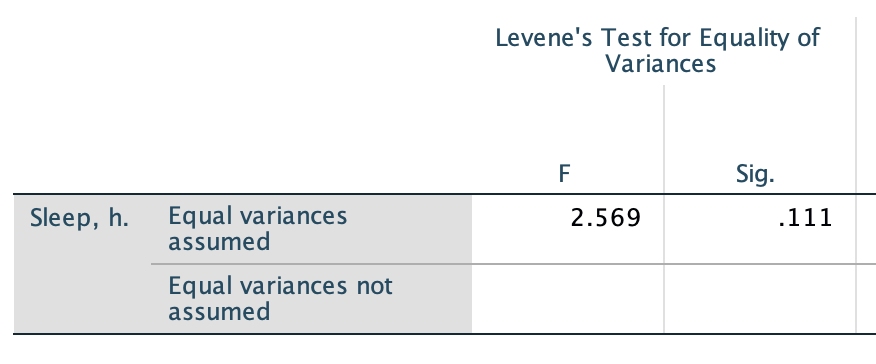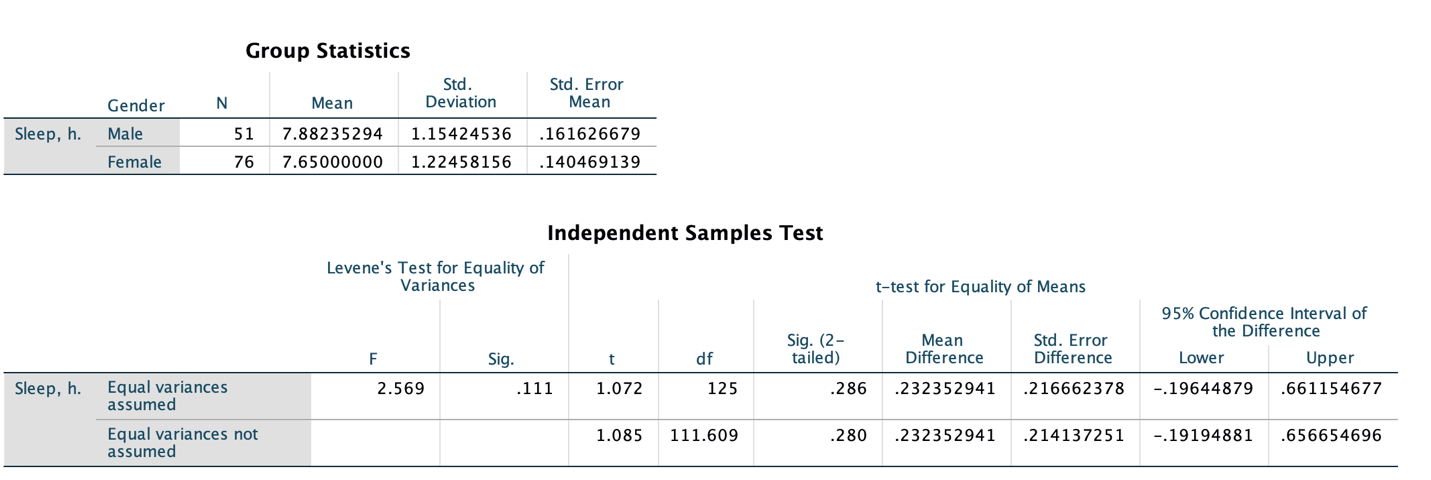Background
This paper investigates potential differences in sleep duration among male and female patients. To find the answer to this question, the paper uses the Independent Samples t-Test, for which the assumption of homogeneity of variance is evaluated, and the results of the analysis are interpreted.
Data Analysis Plan
This paper analyzes the relationship between two variables measured on numerical continuous and nominal scales. Specifically, a gender group of respondents, represented by two categories: male and female, is used as an independent nominal scale. Using exactly two subgroups is a necessary assumption for the parametric t-test because if the number of subgroups increases, another test, namely ANOVA, must be chosen (Laerd, 2021). In contrast, the average number of hours the respondent spent sleeping during the past month is used as the dependent variable. Thus, because the independent factor is represented by two unrelated categories and the dependent variable is defined at the continuous numerical level, a suitable test to find the relationship between them was chosen as the Independent Samples t-Test. Appendix A shows the raw data that was used for the parametric test.
The research question to determine the relationship between the variables was formulated as an effort to determine if a patient’s gender affects their average sleep duration. In other words, could it be reported from the data that men or women exhibited different sleep duration trends over the past thirty days? Based on the research question, the null hypothesis postulated no statistically significant difference in mean sleep duration between the two genders. In contrast, the alternative hypothesis suggested that males and females showed unequal sleep tendencies. Symbolically, these relationships could be written as follows:
- H0: μ1 = μ2
- H1: μ1 ≠ μ2
Testing Assumptions
In order to conduct the Independent Samples t-Test, some assumptions regarding the distribution of the variables must be met. Although the assumption about the nature and independence of the observations was met by the study design, it is necessary to evaluate the assumptions of normality of the nonnominal variable in combination with the homogeneities of the variances. Figure 1.1 shows the Q-Q plot for sleep duration: it can be seen that the data tend to scatter along a linear trend, indicating a trend toward a normal distribution (Mahmood, 2021). In addition, Kolmogorov-Smirnov and Shapiro-Wilk tests were performed to confirm the significance of the normal distribution (Fernandez, 2022). Figure 1.2 shows the results of these tests: it can be seen that both test coefficients were statistically significant, from which it follows that the normality assumption was met.


The second assumption was the condition of homogeneity of variance between the groups. Figure 1.3 shows the results of Levene’s test: one can see the impossibility of rejecting the null hypothesis in this case, which means that both samples had equal variance. In other words, this assumption was also satisfied, which implies that the Independent Samples t-test could be performed for the current data set.

Results & Interpretation
Figure 1.4 shows the results of the Independent Samples t-Test. First of all, one should pay attention to the table of Group Statistics, which shows descriptive trends for each of the genders. One can see that men had slightly higher sleep duration than women (7.9 > 7.7), but a simple comparison is not enough to get reliable results. The Independent Samples t-Test table with the line of equality of variance between groups, which was confirmed earlier, shows that the mean values of sleep duration between men and women are not statistically different, as the corresponding p >.05.

Statistical Conclusions
In this analysis, the Independent Samples t-Test attempted to determine trends in sleep duration between the two genders of patients. The test performed followed all assumptions and showed that there were no statistically significant differences in sleep duration between males and females. The conclusion ensures that any features of patients’ recovery related to sleep duration are independent of gender, which makes it necessary to expand the research further. A limitation of this test is not only its high sensitivity to sample size but also its low robustness to violations of the assumption of the equality of variance. In addition, if the number of subgroups is increased, the test cannot be used.
Application
Sleep quality, realized in particular through sleep duration, is an essential aspect of clinical recovery effectiveness, so studying this pattern has clinical value. The lack of dependence of sleep duration on gender indicates that new influencing factors need to be identified to invest in improving the holistic care of patients during recovery. The study has theoretical and applied value because not only does it clarify the relationship between gender and sleep duration, but it also shows the absence of such a relationship, creating the potential for further research.
References
Fernandez, J. (2022). Choose the appropriate normality test. TDS. Web.
Laerd. (2020). Independent t-test using SPSS Statistics. LS. Web.
Mahmood, M. S. (2021). Understand Q-Q plot using simple python. TDS. Web.